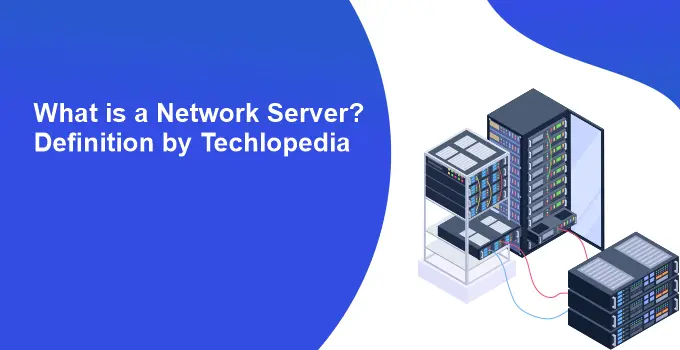What is a Network Server? Definition by Techlopedia
In today’s world, understanding the role and functionality of network servers is essential for anyone navigating the digital landscape. Whether you’re an IT professional, a small business owner, or just curious about how the internet works, this guide will break down the concept of network servers into understandable pieces. We’ll cover what network servers are, their types, some examples & how to connect a computer to one.
Network Server Definition
A network server is a powerful computer designed to serve the needs of multiple users or other computers on a network. It manages network resources, stores shared data, runs applications, and facilitates communication and data exchange among connected devices. Unlike personal computers, network servers are specialized to handle requests from the network, ensuring efficient and secure data processing and storage.
Recommended for You: AI WhatsApp Chatbot: Revolutionizing Communication
Network Server Types
Network servers can be categorized based on their roles and the services they provide. Here are a few common types:
1.File Servers: Store and manage files, allowing users to share and access files over the network.
2.Web Servers: Host websites and manage online content, responding to requests from web browsers.
3.Database Servers: Store and manage databases, processing requests for data storage, manipulation, and retrieval.
4.Mail Servers: Facilitate email communication by handling sending, receiving, and storing emails.
Network Server Examples
To put theory into practice, let’s consider some real-world examples of network servers:
1.File Server: A company might use a dedicated file server where employees can store and share project documents.
2.Web Server: Websites like Google and Wikipedia are hosted on web servers, accessible via the internet.
3.Database Server: Online retailers use database servers to store customer information, product data and transaction histories.
4.Mail Server: Services like Gmail and Outlook operate on mail servers, enabling users to send and receive emails.
Recommended for You: Make Your Business Idea a Reality by Following a Few Simple Steps
How to Connect a Computer to a Network Server?
Connecting a computer to a network server involves a few steps, depending on the type of server and the network configuration. Here’s a simplified process:
- Ensure Network Connectivity: Your computer must be connected to the network, either via Ethernet or Wi-Fi.
- Configure Network Settings: Depending on the server’s requirements, you may need to configure your computer’s network settings, such as IP addresses or DNS servers.
- Access the Server: Use specific software or built-in operating system features to connect to the server. For file servers, this might involve mapping a network drive. For web servers, it involves using a web browser.
By following the above-mentioned procedure you’ll successfully connect your computer to a network server.
UniFi Network Server
UniFi Network Server refers to a comprehensive network management solution by Ubiquiti Networks, designed for streamlined network deployment, management, and monitoring. It includes hardware like UniFi Security Gateways and Switches, and software for network management.
The UniFi Controller software allows administrators to manage their entire network from a single interface, simplifying tasks like device configuration, network monitoring, and guest access management. You can download a UniFi network system here: Download UniFi
Network servers play a crucial role in our daily lives, supporting everything from file sharing and web browsing to email communication and database management. By understanding the basics of network servers, including their types and how to connect to them, you’re better equipped to navigate the digital world.



